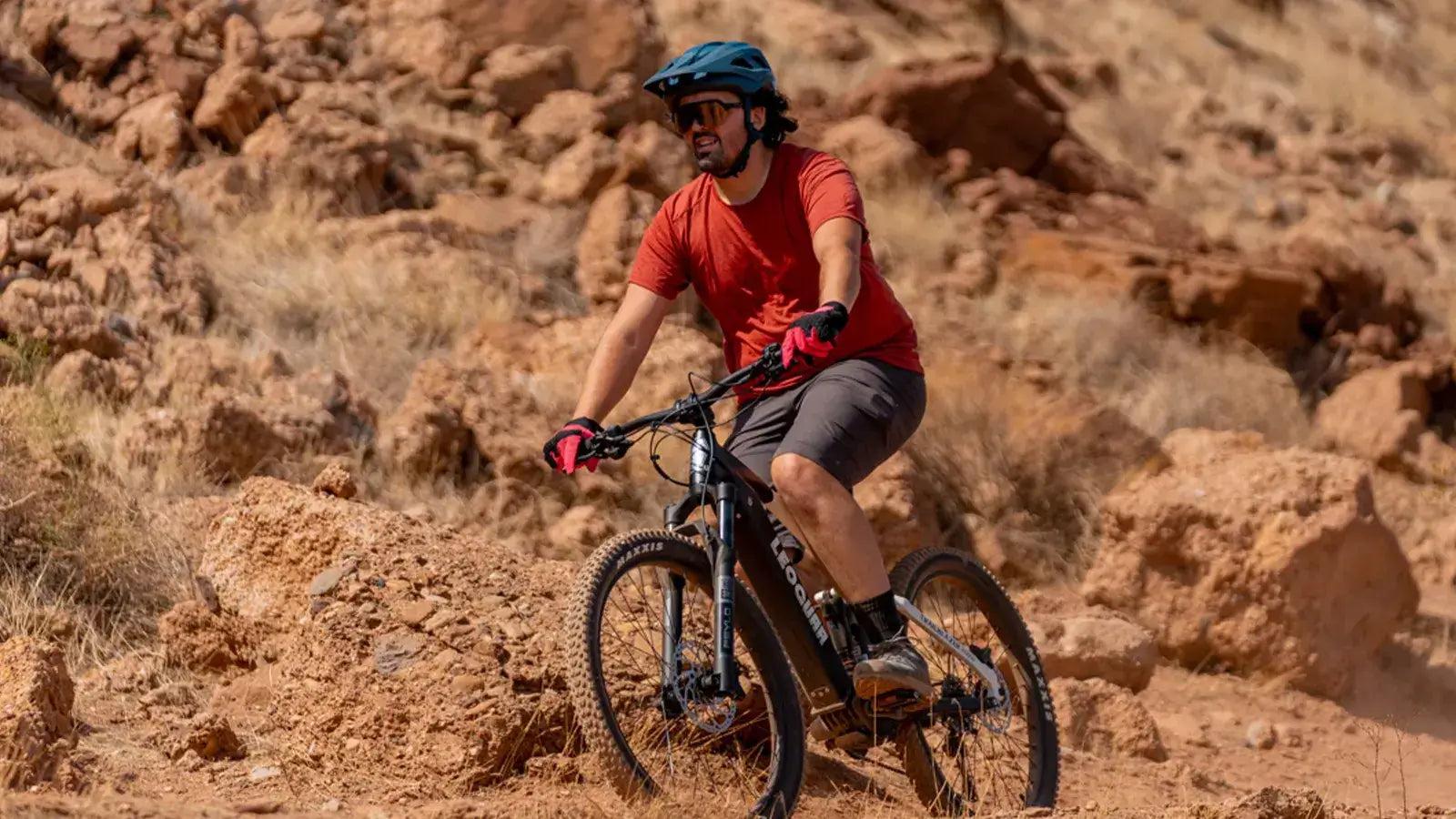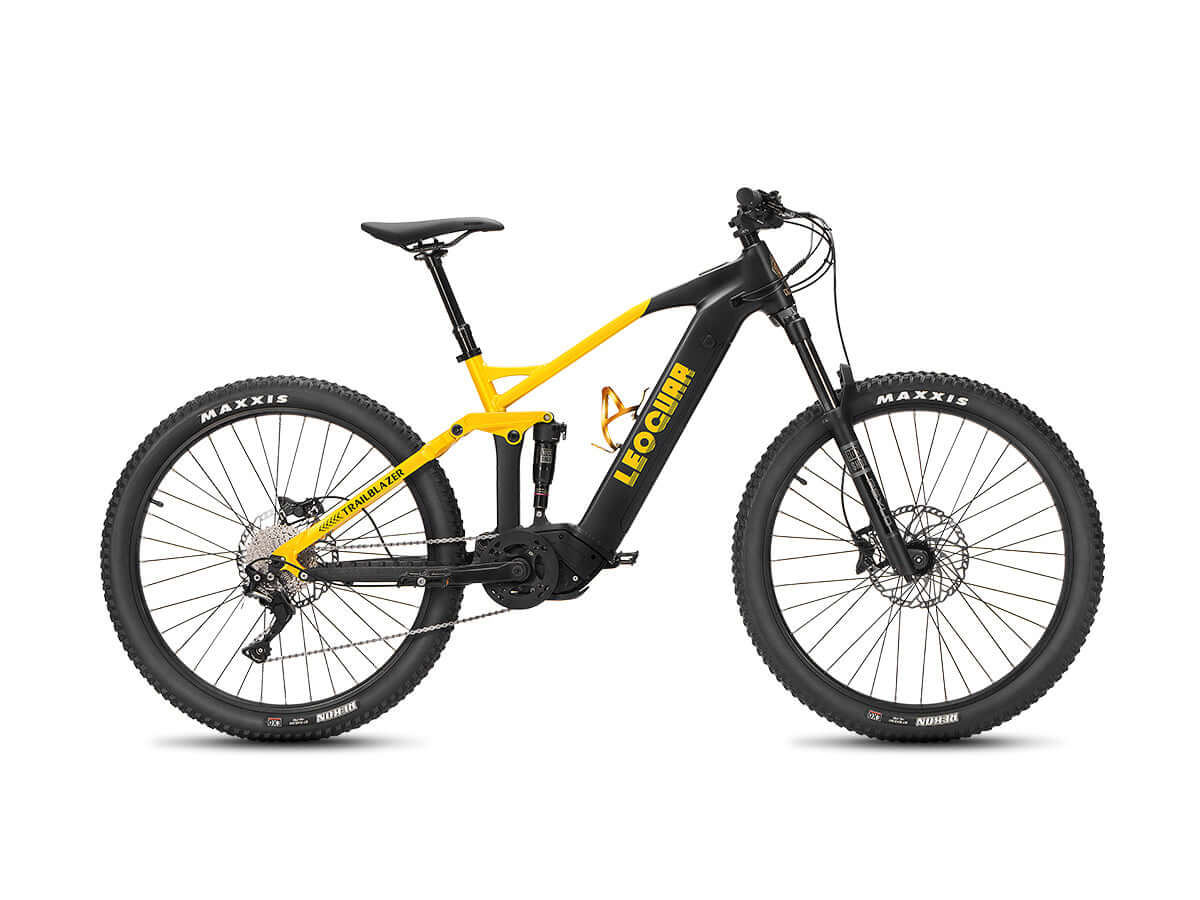
What Is the Fastest Ebike on the Market in 2025?
What Is the Fastest Electric Bike on the Market in 2025
The direct answer to what is the fastest ebike on the market points to a category of vehicles that blur the lines of what a bicycle is. Models like the HPC Revolution W can achieve amazing speeds of up to 80 mph, powered by motors that rival small motorcycles. However, let's establish a critical reality check from the start: these machines are not bicycles in the legal sense.
They are typically classified as off-road vehicles or electric motorcycles, requiring registration, licensing, and insurance for any use on public roads. They are absolutely forbidden on bike paths. This article will break down the concept of the fastest electric bike, separating the "absolute fastest" hyper-bikes from the "fastest street-legal" models you can actually use for commuting. We will also explore the technology that truly defines an electric bike speed.
Pushing Speed Boundaries
The quest for the fastest electric bike has given rise to a niche market of "hyper-bikes." These are engineering marvels designed for one primary purpose: delivering maximum velocity and power, far exceeding legal e-bike limits. They are built for private land, off-road tracks, and the sheer thrill of extreme performance.
Absolute Fastest Contenders
When we talk about the absolute fastest commercially available models, a few names consistently top the list. These bikes feature massive batteries, powerful motors, and motorcycle-grade components to handle the stress of high speeds.
| Model | Claimed Top Speed | Motor Power (Peak) | Intended Use | Key Feature/Limitation |
|---|---|---|---|---|
| HPC Revolution W/XX | 70-80 mph | 10,500W+ | Off-Road Only | Motorcycle-grade frame and suspension; Legally not a bicycle |
| Delfast TOP 3.0i | 50 mph | 5,000W | Private Land / Off-Road | Guinness World Record for range; Very heavy (over 150 lbs) |
| E-Ride Pro SR | 60 mph | 12,000W | Electric Dirt Bike | Extremely lightweight and agile for its power; No pedals |
E-Bike vs. Electric Motorcycle
The critical distinction lies in regulation. As soon as a two-wheeled electric vehicle can exceed 28 mph with motor assistance or has a motor more powerful than 750 watts, it generally exits the legal definition of an "electric bicycle" in the United States.
These high-performance machines are functionally electric motorcycles. This means they are subject to the same rules as any other motor vehicle, including the need for a driver's license, vehicle registration, and liability insurance. Because laws vary significantly by state and country, we strongly advise you to check your local e-bike laws and regulations before considering a purchase. Riding one of these on a public bike path is not only illegal but also incredibly dangerous to yourself and others.

Realistic Street-Legal Speed
While hyper-bikes are impressive, the more practical question for most riders is: what is the fastest e-bike I can legally ride on the street? The answer lies within the Class 3 e-bike category.
These bikes represent the top tier of street-legal speed in the United States and many other regions.
Understanding The Class System
To understand legal speed, you must first understand the widely recognized ebike classification system. This framework categorizes e-bikes based on their top assisted speed and whether they have a throttle.
- Class 1: The motor provides assistance only when you are pedaling (pedal-assist) and stops assisting at 20 mph.
- Class 2: The motor can be activated via a throttle and can propel the bike up to 20 mph without pedaling. It may also have a pedal-assist mode, which also cuts off at 20 mph.
- Class 3: The motor provides assistance only when you are pedaling (pedal-assist) and stops assisting at a higher speed of 28 mph. These bikes do not have a throttle.
This is the "fastest street-legal" category.
Top Class 3 Performers
The best Class 3 e-bikes aren't just about hitting 28 mph; they're about doing it safely, consistently, and comfortably. When evaluating top performers for 2025, we look beyond the motor.
Models like the Leoguar Trailblazer or the Ride1Up Prodigy V2 excel because they pair their 28 mph capability with critical supporting features. These include powerful hydraulic disc brakes for reliable stopping power from high speeds, a rigid and stable frame geometry that inspires confidence, and an efficient battery and motor system that delivers reliable range even when you're pushing the upper limits of its speed. A great Class 3 e-bike makes 28 mph feel controlled and accessible, not frightening.
What Truly Determines Speed
A top speed number on a spec sheet tells only part of the story. To truly understand what makes an electric bike fast in the real world, you need to look at the interplay of several key technical components. This knowledge empowers you to read between the lines of marketing claims and assess a bike's true performance potential.
Power vs. Torque
Riders often fixate on motor wattage, but this metric is incomplete without considering torque. Understanding both is crucial.
- Power (Watts): Think of watts as the measure of the motor's ability to sustain work over time. Higher wattage generally correlates to a higher potential top speed.
- Torque (Newton-meters, Nm): Think of torque as the motor's rotational force or "grunt." It determines how quickly you can accelerate from a standstill and how effectively the bike can climb hills.
A bike with high torque feels punchy and responsive. We use an analogy to clarify: Watts are like a marathon runner's top cruising speed, while Torque is like a sprinter's explosive power off the starting blocks. A bike can have a high-wattage motor but feel sluggish if its torque is low. For a deeper understanding, we recommend a deep dive into e-bike motor technology.
Unsung Speed Heroes
Beyond the motor, several other components are critical to achieving and maintaining high speeds.
- Battery Voltage (V): Voltage is the electrical "pressure" that pushes energy from the battery to the motor. A higher voltage system (e.g., 48V or 72V) can deliver power to the motor more efficiently than a lower voltage system (e.g., 36V).
- Gearing and Drivetrain: On a Class 3 pedal-assist bike, you still need to pedal to reach 28 mph. A drivetrain with a wide range of gears is essential.
- Tires and Aerodynamics: Physics always wins. Narrow, slicker tires have less rolling resistance than wide, knobby fat tires, making it easier to reach and hold high speeds.
Furthermore, your body is the biggest source of aerodynamic drag.
The Reality of High-Speed Riding
Riding an e-bike at its legal limit of 28 mph is a fundamentally different experience than a casual 15 mph cruise. As industry experts who spend countless hours testing these machines, we can tell you that speed demands respect and heightened awareness.
At 28 mph, the world blurs past significantly faster. Potholes appear sooner, braking distances can easily double, and your situational awareness becomes paramount. A split-second decision is the difference between a near-miss and an accident. At these velocities, high-quality components are not a luxury; they are a necessity. Powerful, responsive hydraulic disc brakes are non-negotiable for controlling your speed and stopping reliably.
Gearing Up For Speed
Your safety equipment must match your speed potential. Simply "wearing a helmet" is not enough.
- Certified Helmet: Look for a helmet certified to a higher-speed standard. The Dutch NTA 8776 standard, for example, is specifically designed and tested for the higher impact speeds associated with fast e-bikes.
- Eye Protection: Wind, dust, and insects are a major issue at 28 mph. Riding glasses or goggles are essential.
- Gloves: In the event of a fall, your hands are almost always the first thing to hit the ground. Padded cycling gloves can save your skin.
- Visibility: At higher speeds, you are closing the gap with cars, pedestrians, and other cyclists more quickly.
Brightly colored clothing and powerful, daylight-visible lights make you more conspicuous to others. Always follow expert safety guidelines to ensure your ride is as safe as it is thrilling.

Finding Your "Fastest" E-Bike
The "fastest e-bike" is not a single model but a concept that depends entirely on your needs, your local laws, and your tolerance for risk. The 80 mph hyper-bike is a technological marvel, but for 99% of riders, the 28 mph Class 3 e-bike is the true champion of speed, blending exhilarating performance with everyday usability.
A Final Checklist
Before you purchase a high-speed e-bike, run through this final checklist to ensure you're making an informed decision:
- Define Your Need: Are you looking for the absolute raw power of an off-road machine, or the fast, practical, and legal speed of a Class 3 commuter?
- Check Your Local Laws: Confirm the e-bike classification system and rules for where you plan to ride. Ignorance of the law is not a valid defense.
- Look Beyond Top Speed: Analyze the complete technical picture. Pay close attention to motor torque (Nm), battery voltage (V), brake type (hydraulic disc is a must), and frame quality.
- Prioritize Safety: Factor the cost of high-quality safety gear—especially a certified helmet—into your total budget.
Ultimately, finding the right fast e-bike is about striking the perfect balance. It's a balance between the thrill of velocity and the responsibility of safety, between raw power and legal compliance. Choose wisely, and you'll find a machine that not only gets you there faster but also makes every journey an adventure.
Frequently Asked Questions
1. Q: Can I legally ride an 80 mph electric bike on public roads?
A: No, you cannot legally ride an 80 mph electric bike on public roads as a bicycle. These high-speed machines are classified as electric motorcycles and require registration, licensing, and insurance to operate on public roads.
2. Q: What is the fastest legal electric bike speed in the United States?
A: The fastest legal electric bike speed in the United States is 28 mph for Class 3 e-bikes. These bikes provide pedal-assist only and stop assisting when you reach 28 mph.
3. Q: Do I need special safety gear for riding a 28 mph e-bike?
A: Yes, you should invest in proper safety gear including a certified helmet (preferably NTA 8776 standard), eye protection, padded gloves, and bright clothing with daylight-visible lights. Regular bicycle helmets may not provide adequate protection at these speeds.
4. Q: What's more important for e-bike speed: motor watts or torque?
A: Both are important but serve different purposes. Motor watts determine your potential top speed and ability to sustain high speeds, while torque affects acceleration and hill-climbing ability. A bike needs both adequate watts and torque for optimal performance.
5. Q: Can I convert my regular bike to reach 28 mph legally?
A: Converting a regular bike to reach 28 mph is possible, but the conversion must comply with Class 3 e-bike regulations: pedal-assist only (no throttle), motor cuts off at 28 mph, and motor power cannot exceed 750 watts. The bike must also have proper brakes and components to handle the increased speed safely.








































Leave a comment